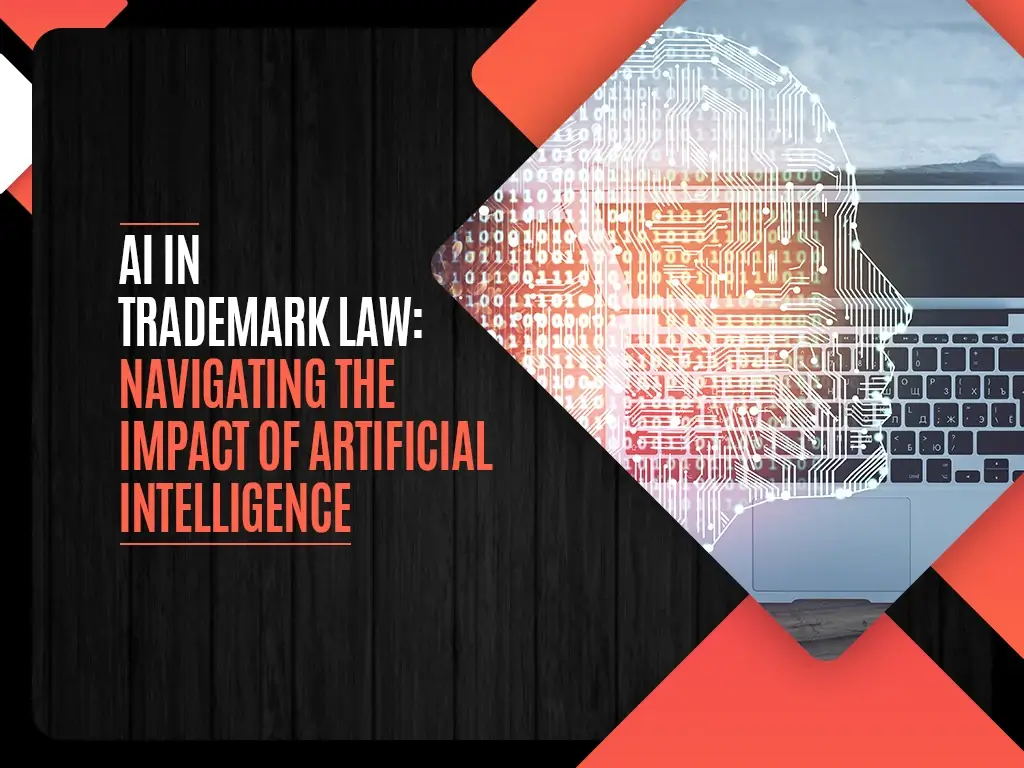AI in Trademark Law: Navigating the Impact of Artificial Intelligence

AI is transforming trademark law, revolutionizing how you search for and own trademarks and manage brands. Adapting trademark legalities to accommodate AI’s impact is essential to protecting intellectual property (IP) rights and navigating complexity. As the journey at the intersection of AI and trademark law continues, you’ll discover more nuances and developments.
Impact of AI on online searching
AI technology advances have revolutionized brand searches, significantly reducing the time and effort required to renew patent properties. Such AI-powered tools comb through vast amounts of data, identifying potential matches and potential conflicts with an efficiency that surpasses traditional, manual methods.
However, it’s not all smooth sailing. The importance of consumer confusion arises when these AI systems, despite their intricacies, need help to differentiate between similar yet distinct trademarks. It is a notable issue in trademark infringement proceedings.
Adapting Trademark Law for AI
AI technologies are transforming trademark clearance, speeding up the process, and increasing the accuracy of trademark searches.However, the rise of AI also brings new legal considerations in intellectual property law. For those facing these complex issues, seeking the expertise of Rapid Legal Lawyers can be crucial to navigate the evolving landscape effectively.
For one, AI’s potential risk of unintentionally causing infringement. AI can’t understand the context as humans do, so it might misuse a trademark, resulting in potential legal disputes. Hence, it’s evident that while AI provides numerous benefits, it also necessitates adaptations in trademark law to guarantee the protection of intellectual property rights in this new digital landscape.
Trademark selection and AI challenges
AI presents unique challenges that could potentially revolutionize the process while posing significant risks. With AI’s expanding capabilities, trademark attorneys face an uphill battle.
AI can evaluate vast amounts of data at lightning speed, but it’s still imperfect in comprehending the nuances of human creativity and intuition inherent to trademark selection. It might overlook similar marks or misjudge a mark’s strength.
More so, technological hiccups may lead to misinterpretations, adding additional layers of complexity to the trademark office.
Permissible and fair use of Trademarks
Under trademark law, permissible use allows non-owners to use a trademark under certain conditions, often balancing the need for competition and free speech.
Fair use, on the other hand, permits using a trademark for purposes such as commentary, criticism, or parody without permission from the owner. However, these notions can be blurred in the AI context. For instance, how does the Lanham Act, which governs trademark infringement, apply when an AI system misuses a trademark?
The answers are complex, but understanding these complexities is critical to exploring the intertwining worlds of AI and trademark law.
AI and trademark infringement
AI has significant implications for infringement and patent proceedings. Legal professionals are grappling with how artificial intelligence interacts with these laws, especially in cases where AI may mislead the average consumer.
For instance, if an AI system misuses a trademark, causing confusion, it could be the subject of litigation. It’s pivotal to note that AI doesn’t perceive trademarks as humans do, raising complex questions about infringement.
Hence, as you navigate the intersection of AI algorithms and trademark law, it’s essential to consider these factors, ensure the technology is deployed responsibly, and respect the boundaries of IP rights.
Last words
AI’s advent alters all aspects of the purchasing process of trademark selection and protection. Permissible and fair use policies pose perplexing problems, while infringement laws incite intricate issues. Yet, in this digital age, you’re not just an observer but an active participant. So, stay savvy and scrutinize the shifting scenarios. In adaptation, you’ll discover advancement.

